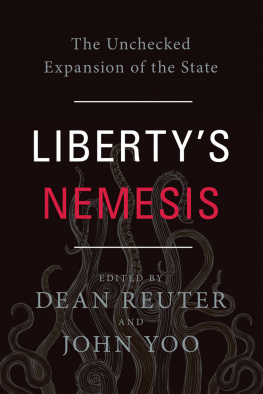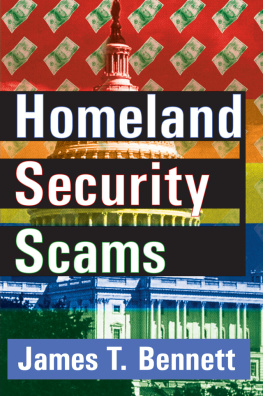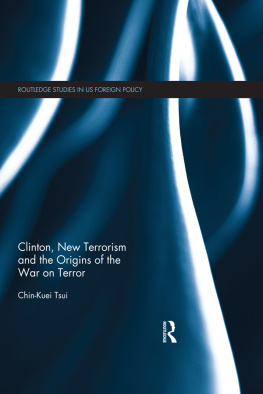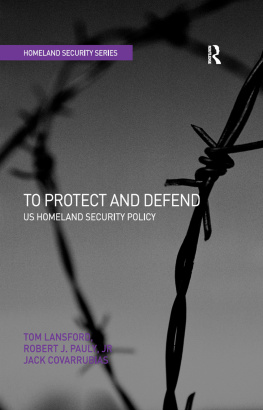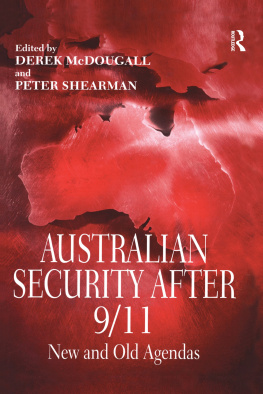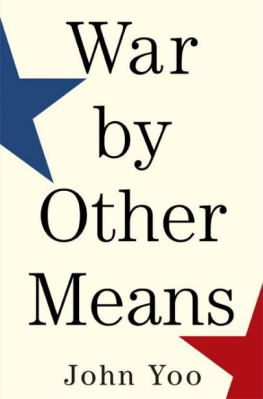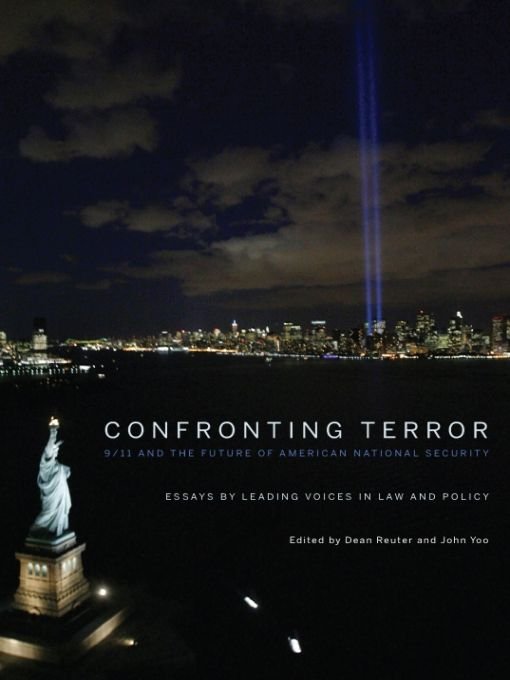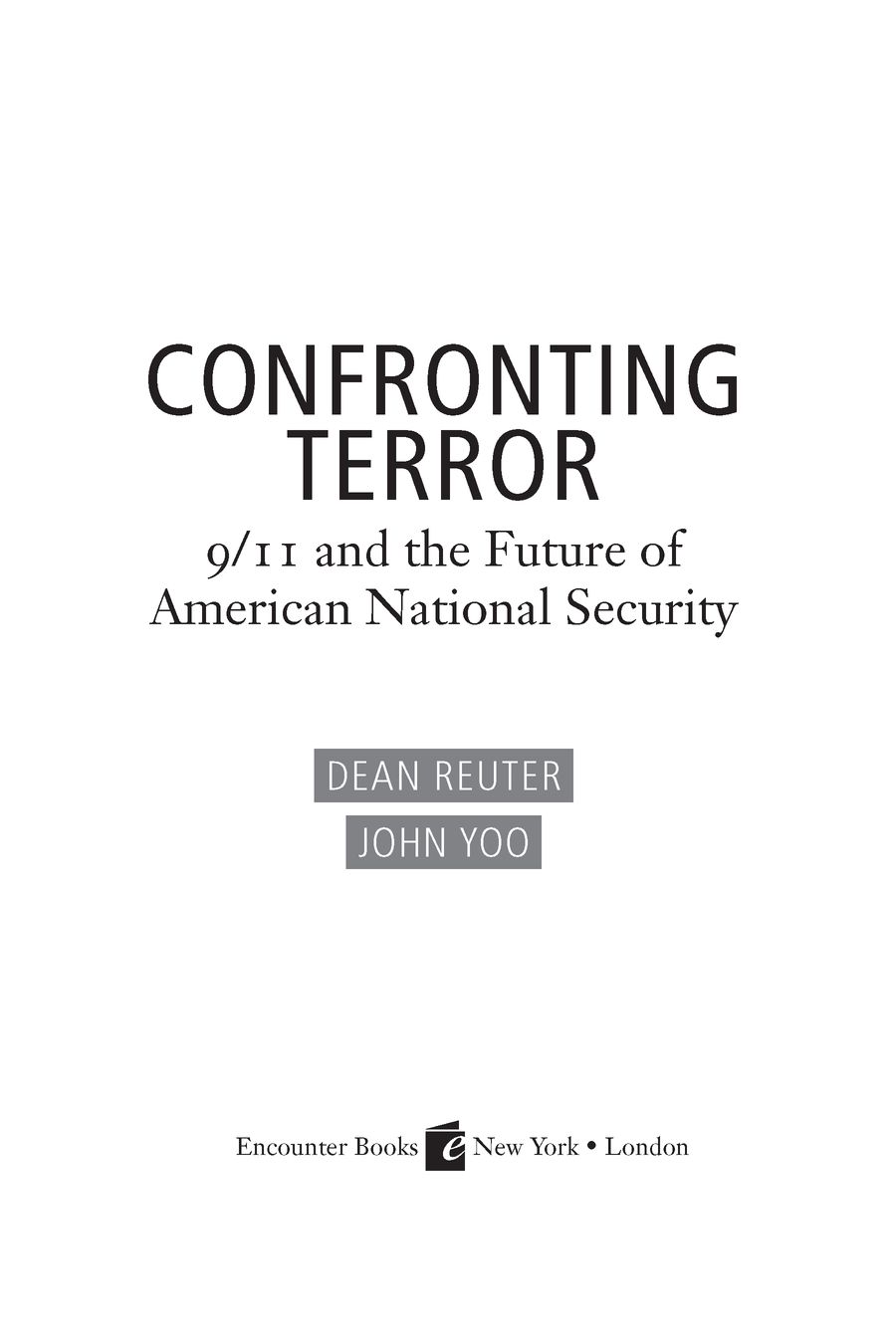Table of Contents
Dean Reuter
To Lou Anne, Taylor, and Hannah
John Yoo
In memory of Barbara K. Olson
introduction
DEAN REUTER
After the September 11, 2001, terrorist attacks, the United States went to war. With thousands of Americans killed, billions of dollars in damage, and now ten years of military and security measures in response, we are still living with the war, an uncertain future, and many unanswered questions. A change of presidential administration has not dulled the controversy over the most fundamental legal and policy issues, the strategies and tactics of the war, or the ontological issue of whether this is even a war.
This book sets the stage for a reasoned, clear, and robust discussion of the future with a collection of new essays examining the law and policy of the war on terror. The contributors include supporters and critics of the war, liberals and conservatives, commentators, scholars, and former government officials; people with very divergent viewpoints, all genuinely held.
The book begins with a stirring address by Theodore B. Olson, delivered just weeks after the attacks, when Ground Zero was still smoldering. Victor Davis Hanson then offers his critique of President Obama the apologist, and the danger that results from a President who has disclaimed the spirit of the war on terror that he inherited, yet has followed and even expanded many of his predecessors aggressive policies. Then follows a historical account by Arthur Herman, who examines the alternating periods of interventionism and isolationism throughout American history to provide the larger context for the 9/11 attacks and Americas response.
The next set of essays frames the fundamental questions, provides essential context, and suggests new ways of thinking. Several chapters touch on the peculiar nature of the enemy and the unprecedented nature of the threat: a non-state actor that has a demonstrated ability to inflict heavy damages and casualties on the United States. Former Secretary of Homeland Security Michael Chertoff argues that the binary choice between a law enforcement and military regime is false, and discusses what flows from that reality. Former Attorney General Edwin Meese and his co-author Paul Rosenzweig urge a nonpartisan approach to the war against terrorists and take a close look at the restructuring of Americas intelligence operations. Judge Laurence Silberman, a senior judge on the D.C. Circuit Court of Appeals, gives an insiders account of his work as co-chairman of the Presidential Intelligence Commission, and joins Meese in his criticism of the intelligence restructuring. Renowned libertarian scholar Richard Epstein offers a provocative discussion of how to analyze the most aggressive and intrusive intelligence collection methods, the use of racial profiling, and the treatment and interrogation of detainees.
Harvard Law School Professor Alan Dershowitz argues in favor of the use of torture in carefully defined circumstances and under certain controlled conditions, including a court-issued warrant. Other contributors, including Professor Jonathan Turley, recoil from that idea. Still others such as Marc Thiessen and Andrew McCarthy cite the successes of our anti-terror strategies, including aggressive interrogation. My co-editor, John Yoo, discusses the difference between torture and the coercive interrogation methods used by the Bush administration, and the role executive power plays in wartime.
Our authors then turn to the issue of domestic civil liberties. Former Congressman Bob Barr and former U.S. Attorney General John Ashcroft, with co-author Viet Dinh, debate the virtues and vices of the USA Patriot Act. We now have the benefit of a decade-long track record and several congressional reauthorizations to inform thinking on the future of civil liberties during this war. Another former U.S. Attorney General, Michael Mukasey, and the president of the ACLU, Anthony Romero, disagree about the proper forum for the trial of terror suspects. These chapters display stark differences in thinking on the extent of the Presidents authority to detain, the assertion of state secrets, the limits of surveillance, the use of unmanned drones and targeted killing, whether and how to continue to prosecute the wars in Iraq and Afghanistan, and more.
Executive branch activities are necessarily a focus of the book, but the presidency is not alone in fielding its share of criticism. We have also included critiques of the judiciary from unexpected sources. The long-time former president of the ACLU, Nadine Strossen, argues that our court system is effectively being closed to terror suspects in what amounts to a fundamental denial of access to justice. Judge Raymond Randolph, a judge on the D.C. Circuit Court of Appeals, emphatically criticizes the U.S. Supreme Court for its war on terror jurisprudence. Charles Kesler completes the volume, discussing Americas reaction to 9/11, focusing on the interaction between patriotism, religiosity, and the spread of democracy. In the books conclusion, John Yoo identifies the areas of continuity between Bush and Obama administration policies, but criticizes the incentives created by the differences introduced by the Obama administration and its harmful effects for the nations security.
I commend these contributors for having remained principled throughout the last decade. Those who criticized President Bush for what they saw as policies that were overly aggressive now criticize Obama for the same. They do not remain silently on the sidelines as womens rights proponents did when President Clinton was investigated and impeached. Likewise, contributors who defended President Bush during and after his administration have never cashed in on the easy opportunity to accuse President Obama of flip-flopping. Rather, most have at least acknowledged that he has performed well on many terrorism issues, allowing President Obama to implement what he believes to be the best policies.
Our authors collectively reveal an interesting fact. Conservatives generally disfavor centralized government on taxing, spending, and market regulation. They rely on the structural Constitution, which sets three federal branches of government against one another in a manner designed to prevent the accumulation of great power in any one branch. The Constitution then further pits the whole of the federal government against the several states to prevent the accumulation of power at the federal level. For conservatives, big government in the domestic realm is anathema. Conservatives question the very need for income redistribution and the rent-seeking that it unavoidably brings. Some conservatives might acknowledge the need for limited government oversight and standard-setting in some circumstances (think abortion, pornography, marriage, antitrust, rules prohibiting fraud), but not in the vast majority of cases. Nearly every measure of government regulation slows the engine of the free marketeven when the government is able to implement the policies it intends, those policies are replete with unintended consequences that run opposite to the regulatory intent. Conservatives doubt the very competence of big government to oversee the domestic policy of the country.
In contrast, liberals consistently welcome an interventionist domestic government. They see it as essential for leveling the playing field. The faith that progressives place in centralizing the governments control over domestic matters has few limits. The liberal vision of America and a robust, redistributive, pervasive government are one and the same.


